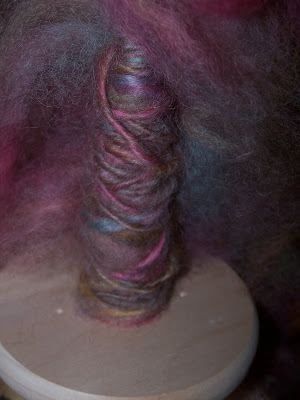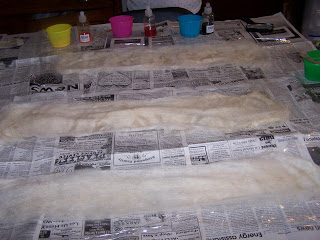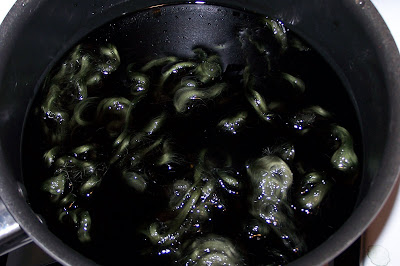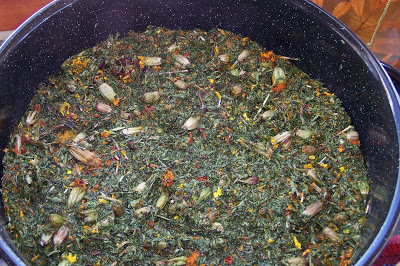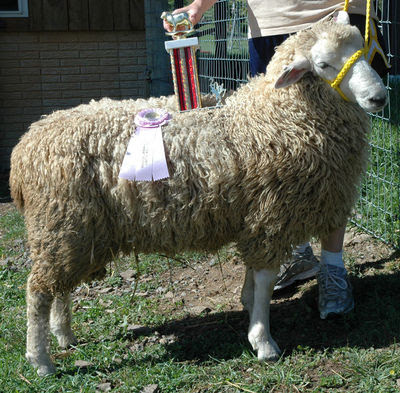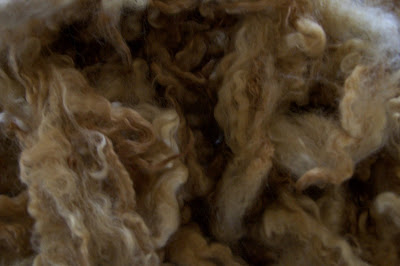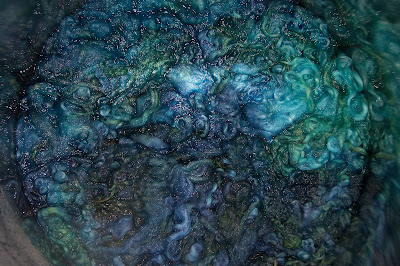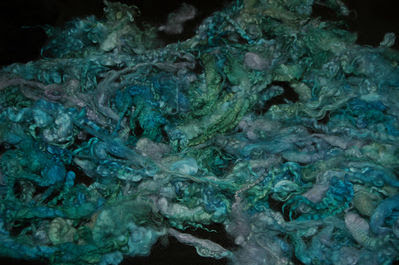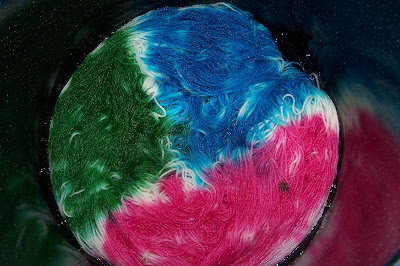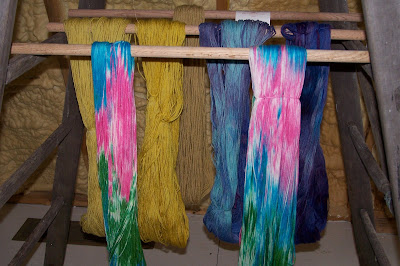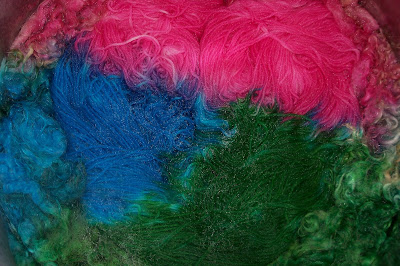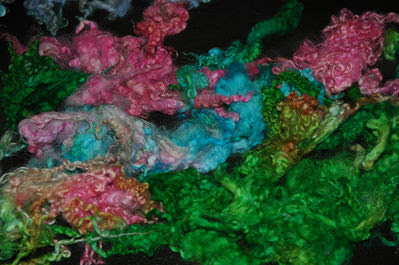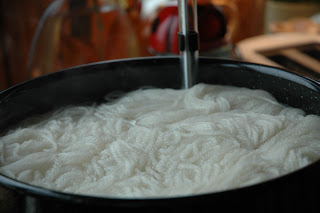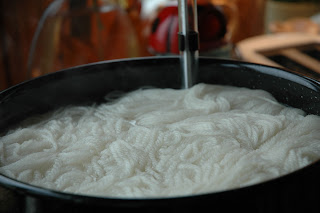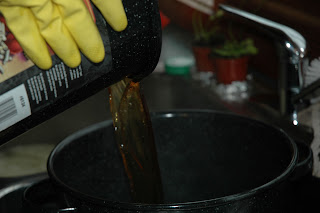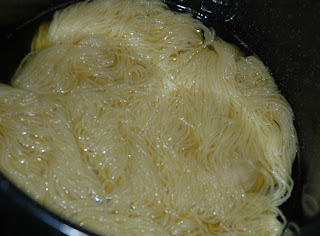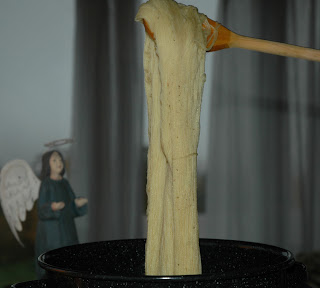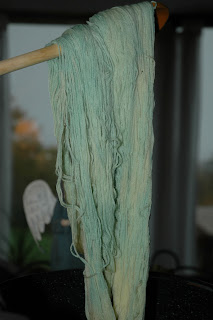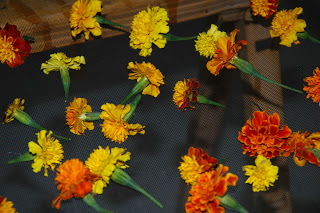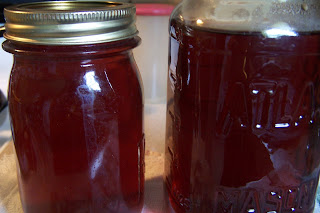 And she also has been designing spinning batts using wool from one of our our Lincoln cross ewes layered with stripes of the carded locks from the canning box of color adding generous amounts of angelina for sparkles. Some of these were given as Christmas presents to her aunts. But, she couldn’t resist spinning up some for herself on the Minstrel with this result:
And she also has been designing spinning batts using wool from one of our our Lincoln cross ewes layered with stripes of the carded locks from the canning box of color adding generous amounts of angelina for sparkles. Some of these were given as Christmas presents to her aunts. But, she couldn’t resist spinning up some for herself on the Minstrel with this result:
Tag: dyeing
Canning Box of Color
 Everyone got in on the artistic fun.
Everyone got in on the artistic fun. Then saran wrap and to the microwave.
Then saran wrap and to the microwave.
 Then to the drying rack.
Then to the drying rack. The left over dyes went to locks for a canning box of color!
The left over dyes went to locks for a canning box of color! Pics of spun dyed batts to follow soon.
Pics of spun dyed batts to follow soon.
The Dye Pot
The daisies were harvested from roadside, field, and flower gardens: over 2 lbs worth was chopped up and boiled for a couple of hours 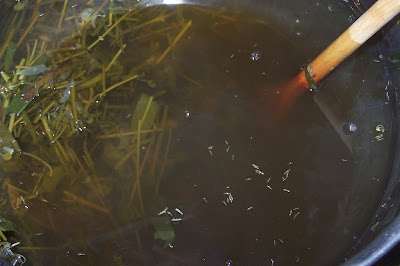 yielding this color of dye bath after straining:
yielding this color of dye bath after straining:
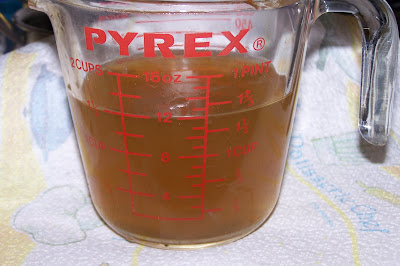 Baking soda was added along with about 7 oz. of unmordanted wool. The addition of the baking soda is suppose to result in a chartruse colored wool. It didn’t seem to be taking up much dye so I added alum as an additional mordant. So far the wool is looking Surprise!! Yellow.Tomorrow after I take out the wool I am going to see what the addition of more baking soda will do the dye bath and dunk some of the wool back in to see if it changes any. If not, yellow IS a very pretty color.
Baking soda was added along with about 7 oz. of unmordanted wool. The addition of the baking soda is suppose to result in a chartruse colored wool. It didn’t seem to be taking up much dye so I added alum as an additional mordant. So far the wool is looking Surprise!! Yellow.Tomorrow after I take out the wool I am going to see what the addition of more baking soda will do the dye bath and dunk some of the wool back in to see if it changes any. If not, yellow IS a very pretty color.
A Productive Dyeing Day
We began the day by preparing a Marigold Dyebath, breaking up a large amount of dried stems, leaves, and flowers in the dyepot and simmering for an hour.
From this stinky ugly brown concoction, we got some very lovely yellow hanks of yarn
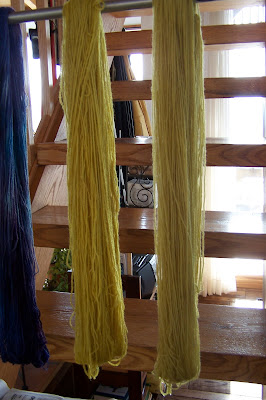
and the next day a more golden/tan color on some locks of wool from our Coopworth cross ram lamb, Goliath.
While the marigolds were beginning their magic, we used our canned hibiscus liquid to begin dyeing another hank. This yarn is still soaking for a couple of days.
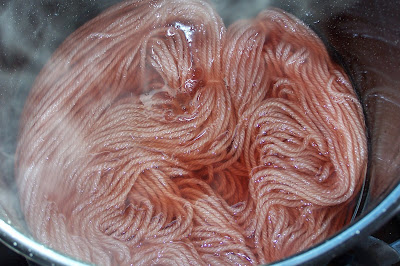
We also did some rainbow dyeing of yarn and mixed lamb locks. First, using turquoise, purple and periwinkle.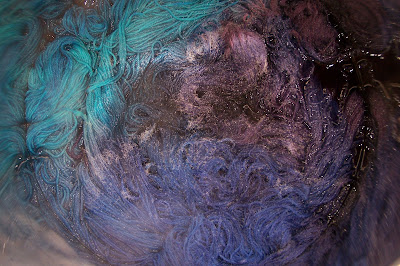
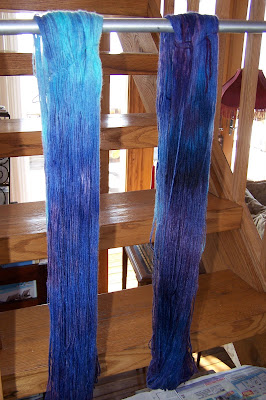
And then using emerald (brightened with some yellow), pink and turquoise.
Using up our left over emerald, we rainbow dyed some additional locks.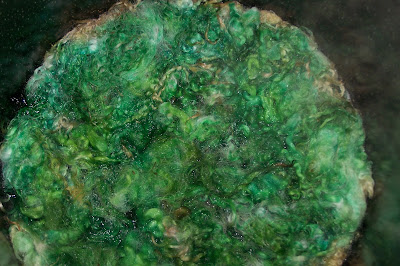
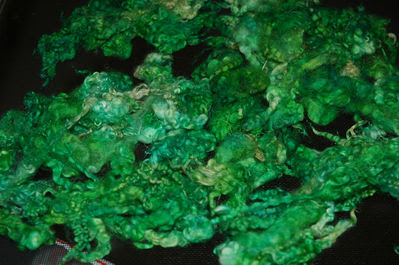 Woo Hoo!! We feel like we accomplished a lot!
Woo Hoo!! We feel like we accomplished a lot!
A Dyeing Day
We devoted today to dyeing. Early this morning we began by mordanting a pound of yarn for future projects. We simmered the yarn for an hour in an alum mixture, and when dry it will be ready for more dyeing with the plant material we have drying from our dyer’s garden.
Next, we moved on to our big task of the day, dyeing with Japanese Indigo or Dyer’s Knotweed.
Using fresh leaves from our garden, we heated them in a huge make-shift double-boiler until the water reached 160 degrees. We then strained the leaves and added baking soda to the fluid to make it alkaline. Pouring the liquid back and forth from one container to another allowed the indoxyl to react with the oxygen in the air and change into indigo.
We then added a reducing agent to convert the indigo into a yellowish form to prepare it for dyeing. We added wet yarn and soaked it for 30 minutes.
We gently lifted the yarn out of the dyebath.
And, ‘like a miracle’ the yarn turned from yellow to blue as it reacted with the oxygen in the air.
Pretty exciting stuff! We also boiled the leaves left over from the indigo production and dyed 4 ozs of mordanted yarn. It turned out very pretty, kind of a gold-khaki color. Will post pictures of it later.
Dyeing with marigolds
All summer long we have been picking the marigold blossoms from our dye garden and drying them. We devoted today to dyeing.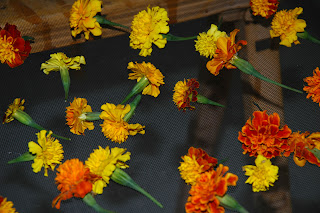
We boiled the flowers, prepared the dyepot and soaked the roving.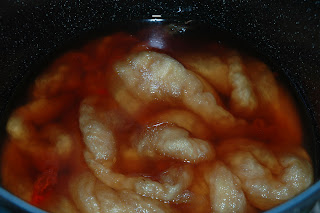
Here is the result on some blue-faced leicester mordanted roving. The color is actually deeper and much richer than the picture shows. It really turned out quite lovely.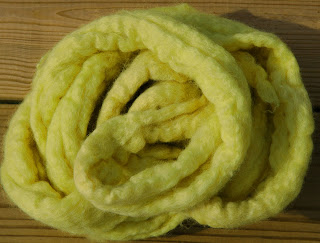
Hibiscus Flowers
We have been picking hibiscus blooms almost every day from our 4 new little plants. After about 2 weeks of gathering and storing in the refrigerator, we get enough to simmer to make a tea for dyeing wool yarn.
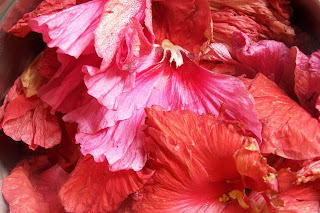
The pretty petals look kinda sad after the pigment is simmered out.
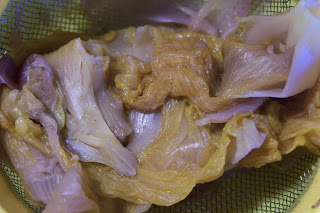
We are hoping that sealing it in canning jars will keep it fresh until we accumulate enough to do some dyeing, and are looking forward to using our own natural dyes.
